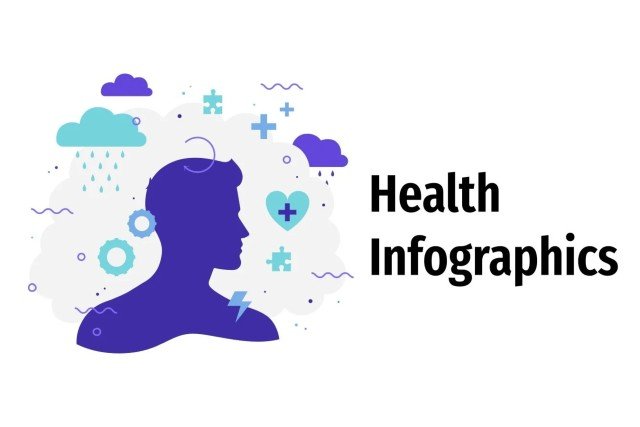Are pretty visuals the secret to improving social shares for your healthcare-related content? Does this mean developing an infographic is the key to being shared? The answer is yes!
Creating health infographics is an excellent tool for education and promotion. But you want yours to be effective.
Of course, you want it to stand out in a busy crowd. You want to provide quality information that your audience can jump on and learn from.
This guide will show you how to create great infographics. Continue reading!
Plan and Gather Relevant Data for Health Infographics
Before diving into the design process, planning and gathering accurate and up-to-date health data is essential. Conduct thorough research. Identify the specific information you want to present.
Consider reputable sources such as scientific studies, government reports, and reliable healthcare organizations. Ensure that the data you collect is reliable and relevant. It should support your intended message.
Define Your Objectives and Target Audience
Clearly define your objectives for creating the health infographic. Are you aiming to educate, raise awareness, or promote healthy habits? Understanding your target audience is equally crucial.
Consider their characteristics and health literacy levels. Ensure that your infographic resonates with their preferences.
Tailor your content to the intended audience. It will increase the chances of successful engagement and comprehension.
Choose a Suitable Layout and Structure
Select an appropriate layout and structure. Ensure that your visual health aid is appealing and easy to follow.
Opt for a clean and organized design. It allows viewers to navigate through the information effortlessly. Use headings, subheadings, and bullet points to provide a logical flow.
Consider using a grid system to align elements neatly.
Utilize Engaging Visual Elements
Visual elements play a significant role in capturing attention and conveying information effectively. Use relevant icons, illustrations, charts, and graphs to represent data.
There are apps on how to make an infographic for free. Use them to work on the visual elements of your design. Choose aesthetically pleasing colors and evoke positive emotions.
Also, ensure the text is readable by selecting suitable font and size. It should strike a balance between simplicity and visual appeal. Allow viewers to understand the information at a glance.
Simplify Complex Data
The key to making it effective is to simplify complex data. Do it without sacrificing its integrity. Break down complex concepts into easily digestible chunks.
You should present information in a step-by-step manner. You can use concise and straightforward language to explain intricate details. Avoid jargon or technical terms that may confuse your audience.
Supplement the information with clear and relevant visuals to enhance understanding.
Provide Context and Credibility
Contextualize the health data presented in your infographic. Provide enough information or relevant statistics to prove your point. It will help viewers better understand the significance of the data and its need.
Additionally, ensure that your sources are credible. Include references or hyperlinks to reputable sources that will add credibility to the information presented.
Follow This Tip
Designing accurate health infographics requires careful planning, relevant data, and effective visual aids. Define your objectives and target audience.
Use suitable layouts and visual elements. Simplify complex data and provide context and credibility.
Follow the steps outlined in this guide. Create health infographics that educate and inspire positive health behaviors.
Visit our website for more helpful tips!



